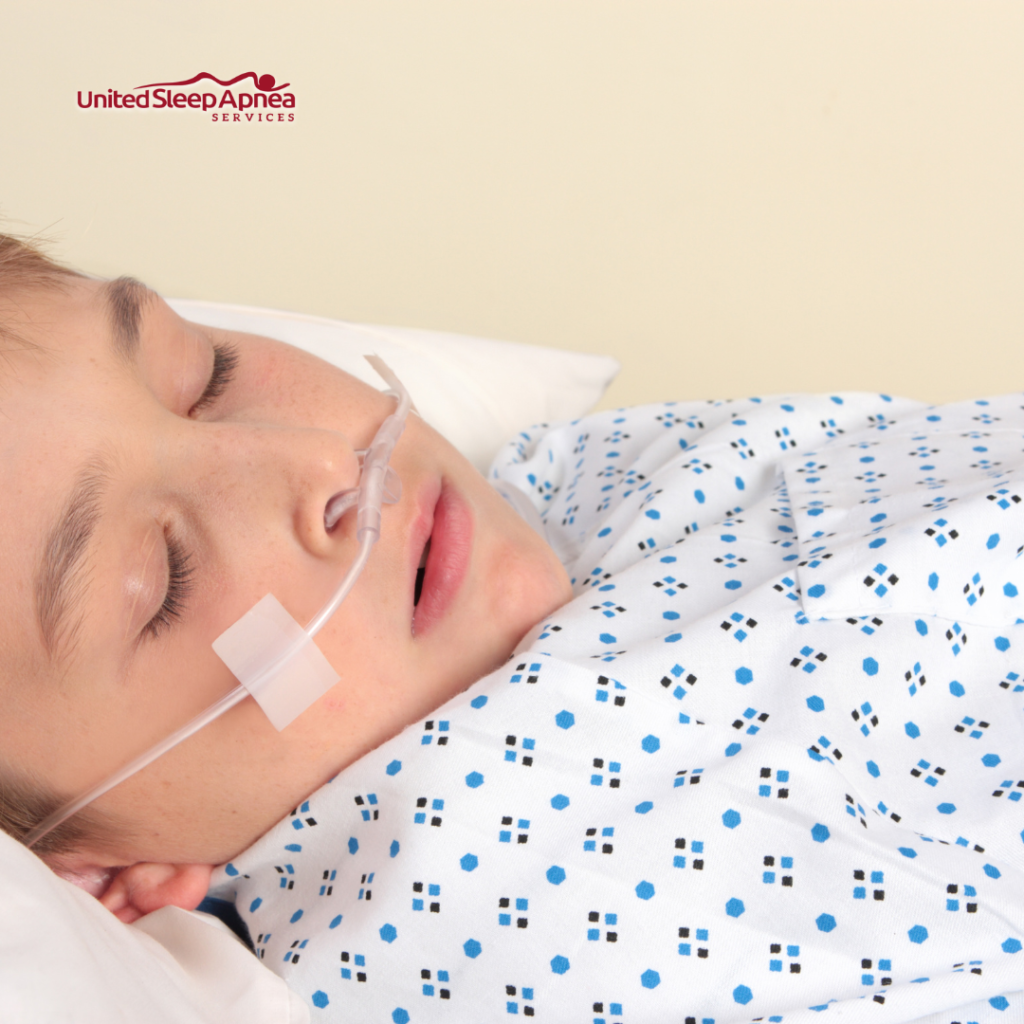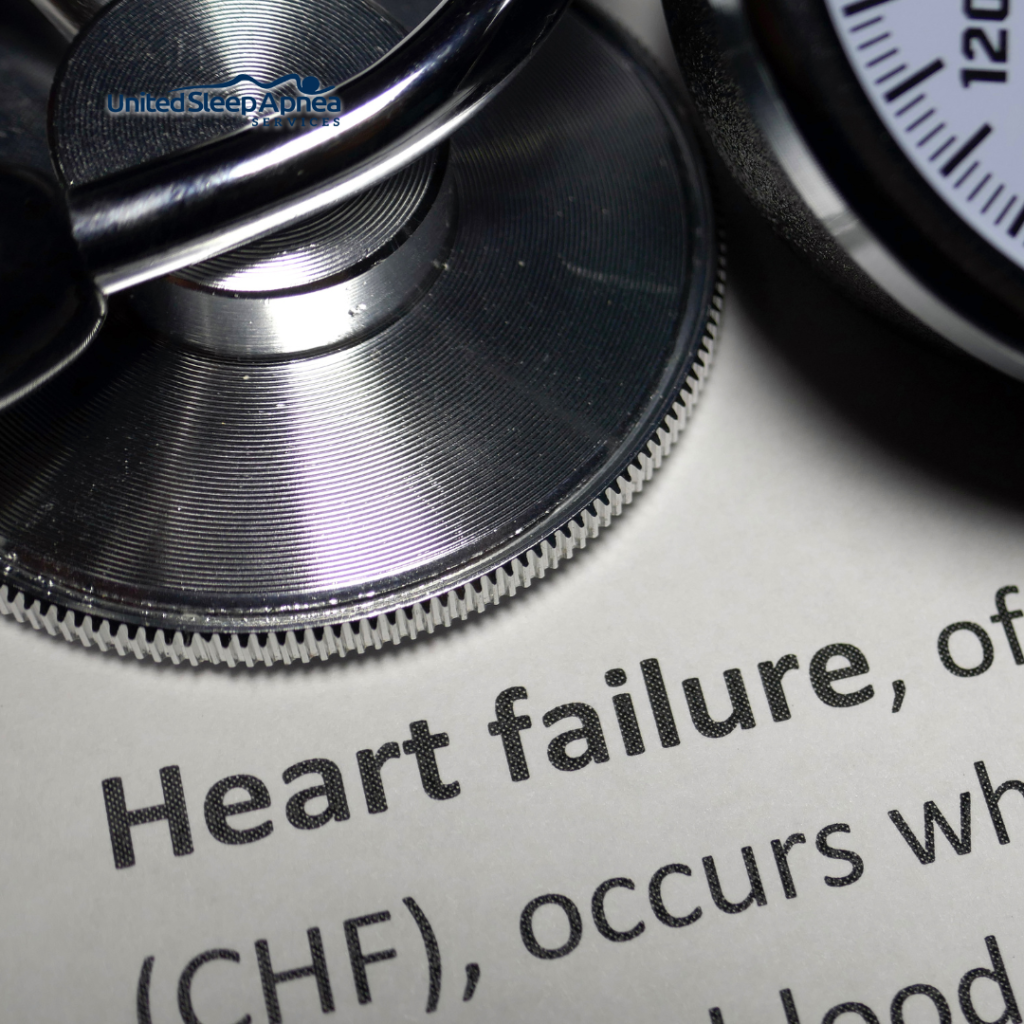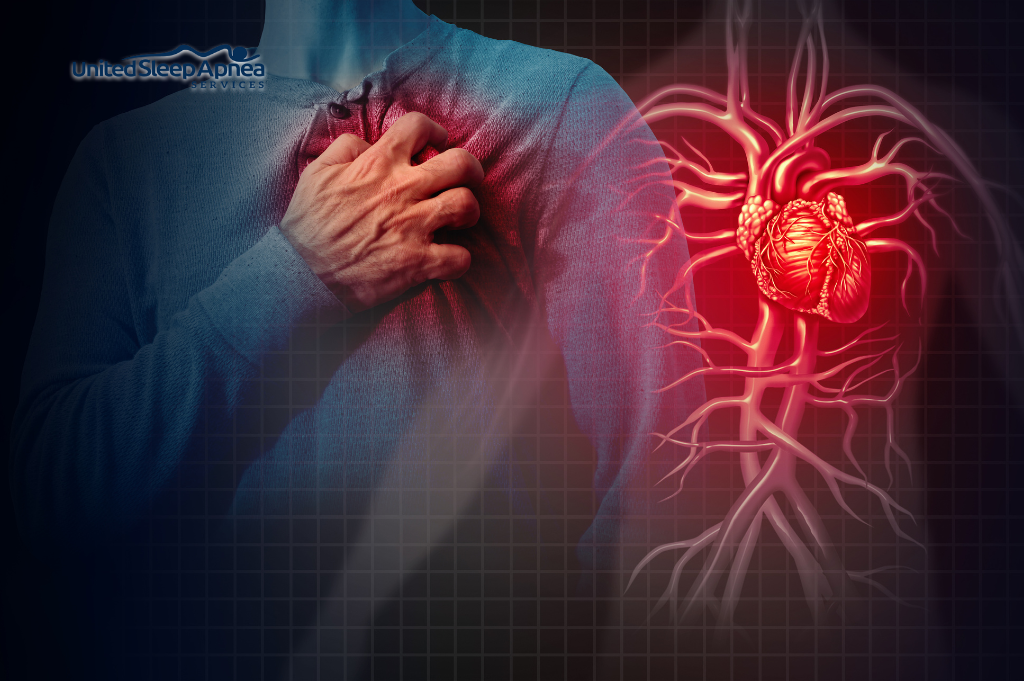Sleep-related breathing disorders (SRBD) are sleep disorders involving breathing difficulty. In most cases, these disorders are associated with partial or intermittent obstruction or narrowing of the upper airways (pharynx). Sleep-related breathing disorders have been classified into various types and subtypes. The severity, symptoms, cause, and treatment of each disorder vary depending on its type. In several cases, more than one type of disorder has been observed in one person.
These disorders can alter sleep architecture and duration while also causing daytime symptoms and organ dysfunction. SRBD is characterized by polysomnography, which captures rapid eye movement (REM) sleep, as chronic perturbation can occur during rapid eye movement sleep.
Most common breathing disorders are grouped into Central Sleep Apnea (CSA), Obstructive Sleep Apnea (OSA), sleep-related hypoxemia or nocturnal hypoxemia, and sleep-related hypoventilation. Some of these sleep disorders may have a limited impact on health, while others may cause serious health consequences due to their effect on the oxygen levels in the body during sleep. Nocturnal hypoxemia is a sleep-related breathing disorder that impacts the oxygen levels in the body, causing adverse effects.
Sleep-related breathing disorders like sleep apnea and nocturnal hypoxemia can increase the risk of developing hypertension and cardiovascular disease. Studies have also suggested that people with SRBD are likely to develop chronic medical conditions, such as hypertension, stroke, and myocardial infarction.
What is Nocturnal Hypoxemia?
Nocturnal hypoxemia is a sleep disorder that occurs when the blood oxygen levels in the body fall below normal levels during sleep. When the oxygen levels in the blood are low, the body may become inefficient in working properly.

Blood transfers oxygen to all the cells in the body, keeping them healthy. Nocturnal hypoxemia can cause minor health problems like shortness of breath and headaches. In some cases, it can interfere with the functioning of the brain and heart.
Nocturnal hypoxemia is the second most common sleep disorder with cardiovascular risk factors next to sleep apnea. Nocturnal hypoxemia episodes during the apneic phase of sleep may represent a severe consequence of Sleep Apnea Syndrome (SAS) because these episodes can cause or increase the tone of nocturnal hypoxemia.
Causes of Hypoxemia
Several circumstances and health conditions can interfere with the ability of the body to carry oxygen to the blood. Some common causes of hypoxemia include:
- Lungs-related health problems, such as emphysema, bronchitis, pulmonary edema, pneumonia, and asthma
- High altitudes where the oxygen level in the air is low
- Strong medications and problems that slow the breathing process
- Heart conditions, such as bradycardia and ventricular fibrillation
- Sleep apnea
- Scarring or inflammation of the lung tissue
- Gas or chemical poisonings, such as carbon monoxide and cyanide
Symptoms of Nocturnal Hypoxemia
The symptoms of hypoxemia may be chronic or acute.
The acute symptoms may occur rapidly and include:
- Rapid breathing
- High heart rate
- Shortness of breath
However, some symptoms that can occur in an acute or chronic state of nocturnal hypoxemia are:
- Sweating
- Coughing
- Wheezing
Some of the severe symptoms that may appear during chronic nocturnal hypoxemia are
- Inability to communicate
- Coma
- Death
Moreover, young patients with nocturnal hypoxemia may have the following symptoms along with the symptoms mentioned above:
- Irritability
- Lethargy
- Anxiousness
- Inattentiveness
- Patients with airway restrictions or epiglottitis may breathe through the mouth and drool.

ARE YOU MISSING OUT ON THE MOST RESTORATIVE SLEEP OF YOUR LIFE?
Reduce your daytime fatigue with the latest diagnostic testing and physician services for improved health.
Our team of experts will listen to your concerns, guide you through the process, and answer all your questions.
Diagnosing Nocturnal Hypoxemia
Nocturnal hypoxemia may often be confused with comorbid symptoms; hence, an outpatient test may not be sufficient to diagnose sleep-related breathing disorders. Ambulating and resting oxygen levels in the blood don’t indicate oxygen levels during sleep. Nocturnal hypoxemia is a sleep disorder related to disturbed sleep, with no evidence of hypoxemia in the daytime.
Diagnosing nocturnal hypoxemia can be inexpensive and straightforward. Using overnight pulse oximetry can be an acceptable diagnosing method to identify hypoxemia in patients with sleep disorders. However, complete polysomnography or home sleep apnea test can identify sleep disturbance if serious sleep-related disorders are suspected. Methods of diagnosing nocturnal hypoxemia are:
- Pulse Oximetry: A sensor that measures pulse and blood oxygen levels (SpO2). The method is non-invasive and painless.
- Arterial Blood Gas Test: Arterial blood sample is a procedure to measure the oxygen levels of oxygen in the blood.
- Overnight Polysomnography: It is a comprehensive sleep test that diagnoses sleep tests. It records blood oxygen levels, brain waves, breathing, heart rate, and eye and leg movement during sleep.
- Home Sleep Apnea Test (HSAT): Also known as the out-of-center sleep test, HSAT is a diagnostic test used for diagnosing Obstructive Sleep Apnea. This is a popular alternative to in-laboratory polysomnography tests to diagnose sleep disorders.
Relation between Nocturnal Hypoxemia and Cardiovascular Diseases
Heart failure and sleep-related breathing disorders are worse than heart failure cases without signs of SBRD.
In a study on 164 patients with 45% or lesser left ventricular ejection fraction and heart failure, patients with SRBD, had higher cardiac mortality. Several studies have shown an association between nocturnal hypoxemia and other sleep-related breathing disorders with various heart diseases.
Congestive Heart Failure
Congestive Heart Failure (CHF) is a primary cause of morbidity and mortality.
Sleep-related breathing disorders are common in patients with cardiovascular diseases.
SRBD disorders are prevalent in congestive heart failure patients, but the symptoms of these disorders are less prevalent.
Patients with heart failure have a high risk of developing SRBD. However, the risk varies with the type of sleep-related breathing disorder.

The common type of sleep-related breathing disorders among CHF patients is Obstructive Sleep Apnea (OSA), Cheyne Stokes Breathing (CSB), and nocturnal hypoxemia. While obstructive sleep disorder is more common, CSB is prevalent in patients with CHF. Studies also suggested that the prevalence and development of sleep-related breathing disorders can be as high as 50% in all patients with heart failure.
Risk factors of sleep-related breathing disorders in patients with congestive heart failure may vary depending on the type of disorder. For Cheyne Stokes Breathing (CSB) disorder, risk factors may depend on age, gender, hypocapnia, and atrial fibrillation.
Nocturnal Myocardial Ischemia
Nocturnal myocardial ischemia and nocturnal hypoxemia are associated, and the link between the two was demonstrated in a study on 19 acute myocardial infarction patients. The patients were continuously monitored with pulse oximetry at night. Constant and episodic hypoxemia was observed. Episodes of hypoxemia, along with tachycardia and arrhythmias, were also observed in several nocturnal ischemia patients.
Patients with sleep-related breathing disorders, including nocturnal hypoxemia, have a high risk of developing Myocardial Ischemia (MI), especially patients under 50. Changes in blood pressure, heart rate, and sympathetic nerve activities are more demonstrative during sleep in SRBD patients. These changes can be improved using CPAP. These hemodynamic and autonomic changes caused by apnea and nocturnal hypoxemia may lead to the development of cardiac ischemia.
Moreover, Obstructive Sleep Apnea affects cardiovascular health by various pathophysiological mechanisms, such as hypercapnia, repetitive episodes of hypoxemia, negative intrathoracic pressure, and sleep fragmentation. Among these, hypoxemia is one of the most important factors that can cause cardiovascular damage. The oxygen saturation pattern in sleep apnea produces re-oxygenation and tissue hypoxemia. Low oxygen saturation is associated with inflammation, sympathetic activation, hypercoagulation, impaired endothelial function, metabolic disorder, and oxidative stress, increasing the risk of myocardial ischemia.

ARE YOU OR YOUR LOVED ONES AFFECTED BY SLEEP APNEA?
Reduce your daytime fatigue with the latest diagnostic testing and physician services for improved health.
Our team of experts will listen to your concerns, guide you through the process, and answer all your questions.
Atrial Fibrillation
Research published in the CHEST journal described the association of nocturnal hypoxemia with the risk of atrial fibrillation in patients with Obstructive Sleep Apnea. Diagnosing and treating hypoxemia may help prevent the risk of developing atrial fibrillation in OSA patients. The research also showed that nocturnal hypoxemia is associated with a 77% increased risk of incident hospitalized atrial fibrillation.
Sleep-related breathing disorders are more common in atrial fibrillation patients compared to other patients with multiple comorbidities. Moreover, the increased severity of nocturnal hypoxemia and OSA also increases the risk of developing atrial fibrillation. In a study on 3,542 adults with no signs of AF who underwent polysomnography, incident AF was observed in 133 adults with a mean follow-up duration of 4.7 years. The severity of oxyhemoglobin desaturation during sleep was a major factor in predicting atrial fibrillation in adults of age below 65 years.
In another study on patients with atrial fibrillation, sleep-related breathing disorders were associated with the outcome of heart failure hospitalization and all-cause mortality. Hence, increased risk of AF in patients with SRBD may be associated with increased risk of mortality. The risk of AF increases noticeably right after respiratory disturbance in patients with SRBD.
Ventricular Arrhythmias
Sleep-related breathing disorders are associated with both acute and chronic ventricular arrhythmias. Ventricular arrhythmias are abnormal heartbeats originating in the ventricles or lower heart chambers. This causes the heart to beat faster, preventing oxygen-filled blood from traveling to the brain and other parts of the body.
This can cause cardiac arrest. Patients with OSA may exhibit severe nocturnal hypoxemia during apneic episodes, along with a variety of ventricular arrhythmias.
Primary Pulmonary Hypertension (PPH)
Primary pulmonary hypertension is a rare disease characterized by an increase in pulmonary arterial pressure. When patients with poor prognosis PPH are not treated, 68% of the patients have a survival rate of one year, and only 34% have five years of survival rate. Sleep can cause a major impact on patients with severe PPH, as it influences airway stability, ventilatory mechanics, and respiratory drive. Patients with PPH usually report sleep disorders, including insomnia, Obstructive Sleep Apnea, excessive sleepiness during daytime, and nocturnal hypoxemia.
Nocturnal hypoxemia can cause polycythemia, pulmonary hypertension, and respiratory failure. It causes pulmonary vasoconstriction and increased pulmonary artery pressure. Unsuspected and untreated nocturnal hypoxemia in PPH patients can have harmful effects and worsen primary pulmonary hypertension (PPH).
A study published in the CHEST journal suggested that 77% of PPH patients suffer from nocturnal hypoxemia. Severe desaturation of oxygen occurred independently from apnea and hypopnea. It showed that monitoring nocturnal oxygen saturation can benefit patients with PPH. Nocturnal hypoxemia is an effective pulmonary arterial bed vasoconstrictor.
Usually, nocturnal oxygen saturation is only monitored when a PPH patient is suspected of sleep apnea. However, untreated nocturnal hypoxemia can lead to progressive right ventricular dysfunction and increased pulmonary artery pressures. Sixty-three percent of PPH patients die because of right ventricular failure.
Besides, untreated nocturnal hypoxemia can also result in nocturnal arrhythmias, impaired myocardial oxygenation, leading to sudden death. In the study, researchers also found that patients suffering from nocturnal hypoxemia had higher levels of hemoglobin and hematocrit compared to patients who didn’t experience desaturation. Patients with restrictive and obstructive lung disease may suffer from nocturnal hypoxemia despite having normal levels of oxygen saturation.
Conclusion
Nocturnal hypoxemia is a sleep-related breathing disorder in which the blood oxygen level in the body decreases during sleep. Due to low oxygen levels, various organs in the body may become insufficient to work properly and severely damaged.
Treatment of nocturnal hypoxemia aims to increase the blood oxygen level in the body. The underlying conditions that can cause hypoxemia are treated. In most cases, medication is provided through inhalers to inhale medicine to the lungs. In severe cases, oxygen therapy is prescribed. The amount of time and location of oxygen therapy depends on the needs and severity of the problem.
Nocturnal hypoxemia is often associated with various cardiovascular diseases, including congestive heart failure, myocardial ischemia, atrial fibrillation, and ventricular arrhythmias. If nocturnal hypoxemia is unsuspected and untreated, it may cause severe damage to the heart. Sleep-related breathing disorders can cause major damage to the heart and other organs of the body. These disorders can be diagnosed with pulse oximetry, overnight polysomnography, or home sleep apnea test.
According to the American College of Cardiology, screening for SRBD like nocturnal hypoxemia and OSA is important in diagnosing and treating chronic heart failure. Hence, it is essential to treat nocturnal apnea and other sleep disorders to prevent them from developing into severe problems and causing damage to your heart and brain.


